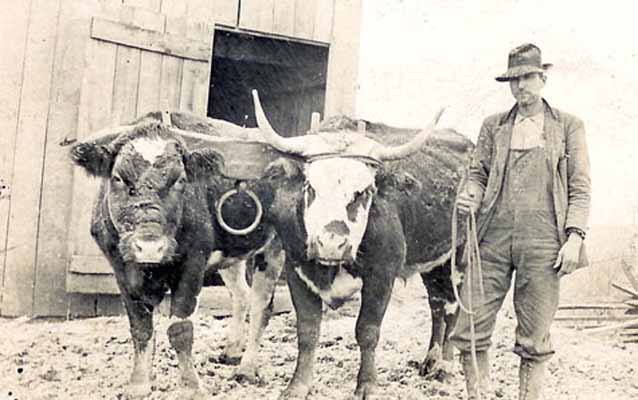Last updated: November 11, 2023
Lesson Plan
Homestead Act Paperwork

- Grade Level:
- Middle School: Sixth Grade through Eighth Grade
- Subject:
- Literacy and Language Arts,Social Studies
- Lesson Duration:
- 60 Minutes
- Common Core Standards:
- 6-8.RH.1, 6-8.RH.2, 6-8.RH.3, 6-8.RH.4, 6-8.RH.5, 6-8.RH.6, 6-8.RH.7, 6-8.RH.8, 6-8.RH.9, 6-8.RH.10
Essential Question
Why is documentation important?
Objective
Critical Content:
The Homestead Act of 1862
Student Objectives:
Students will:
analyze historical documents.
explain the paperwork involved with claiming land under the Homestead Act of 1862.
Background
President Abraham Lincoln made the Homestead Act a law by signing it on May 20, 1862. This law gave 160 acres of land away to individuals who met certain requirements. In order to file a claim, an individual had to be at least 21 years of age or be the head of household. This law allowed women to file claims and own land. The act also required a person to be a citizen of the United States or declare intention to gain citizenship. This allowed many European immigrants, African-Americans and others to stake claims as well. Many railroads and western towns sent representatives to European countries to entice people to move to the United States. These representatives showed pictures of beautiful towns with tree-lined streets and rich soil for farming.
The applicant of a claim had to file an affidavit with the local land office stating they met the conditions required by the law. At this time, the claimant would pay a fee of $12 for filing the paperwork.
Once the filing was complete, there were additional requirements to meet in order to receive the patent and title to the land. A person had to build a home, live on the land, make the land his/her permanent residence, and work the land for a period of 5 years.
Many people who came to claim land paid for the services of a locator. This person would assist them in finding an unclaimed tract of land. Many locators showed individuals land near their own claim in order to "settle" the country and have neighbors nearby.
After living on the land, building a home, and farming the land for 5 years, it was time to "prove up." This simply required the homesteader to find two individuals who would serve as witnesses. These witnesses had to state they had known the homesteader for 5 years, knew the claimant had tilled the land and grown crops. With witnesses in tow, a claimant would proceed to the land office to "prove up," paying another small filing fee of $6 and having both witnesses sign the final documents. Afterwards, the claimant would receive a final certificate or patent to the land, having met all the conditions.
Homesteading by the Numbers
10 Percent of U.S. land given away under the Homestead Act.
30 Number of states in which homestead lands were located.
40 Percent of homesteaders that "proved up" their claims earned a deed from the federal government.
123 Years the Homestead Act was in effect.
160 Acres in a typical homestead claim.
4,000,000 Approximate number of claims made under the Homestead Act.
27,000,000 Total number of acres distributed by the Homestead Act.
Preparation
Missing
Procedure
Ask students if they have ever had to produce documentation of who they are or when they were born? Why did they have to do this? Why is it important to have documentation?
Explain that students will learn what type of documents had to be completed in order to earn a Homestead Patent.
Distribute the National Archives Written Document Analysis Worksheet and the Neve Land Records to each student. Students will need to complete a worksheet for each of the records.
Students may be placed into groups to reduce the time needed to complete the analysis.
Assessment Materials
Once students have completed their analysis, have them describe some of the information that they found to be interesting as well as discussing any questions that they might have. Discuss with students whether they feel the paperwork was too much, not enough, or just right. Discuss why.
Enrichment Activities
Additional ONLINE Lesson Plans created by Homestead National Historical Park in partnership with the National Archives and Records Administration.
The Homestead Act of 1862
Students will examine congressional laws and homesteading records while searching for clues as to what order to put them in. The documents used in the activity should be examined carefully as to their correct order. The names and dates are of no significance. It is the type of document that is significant and what order they would have been done to claim land under the Homestead Act of 1862.
Additional Resources
